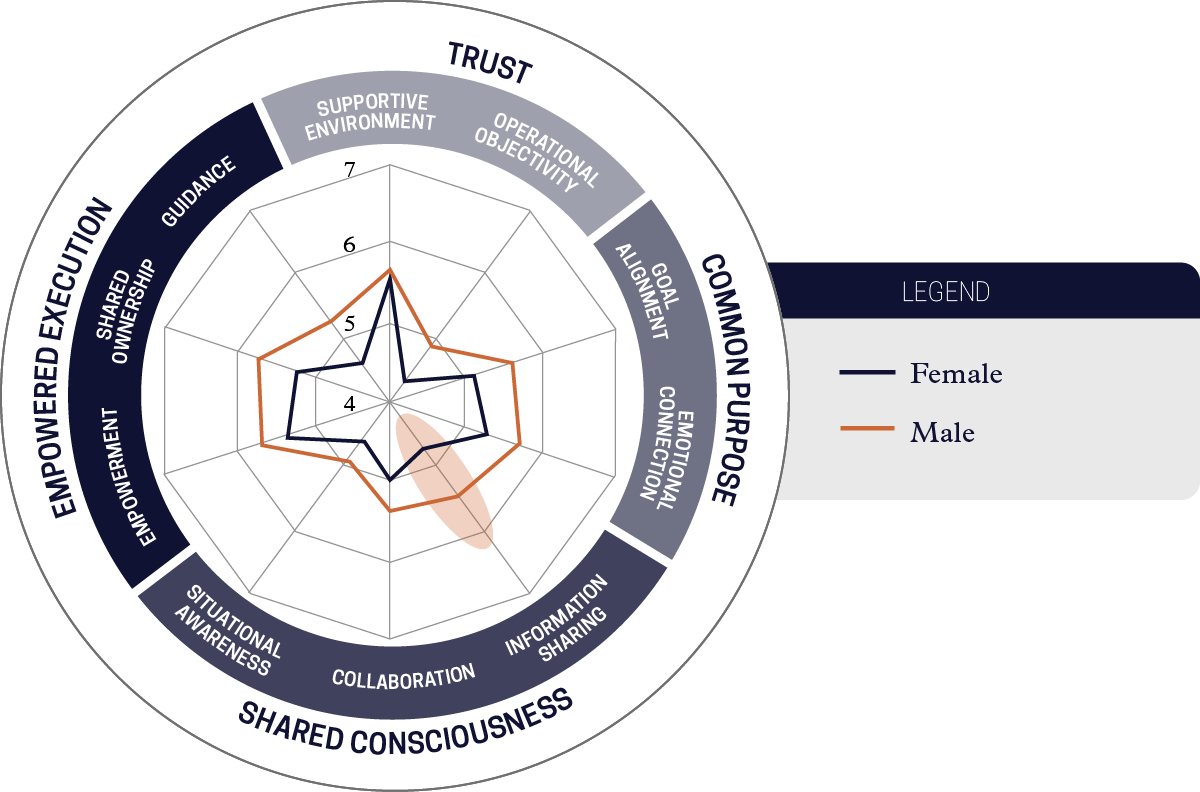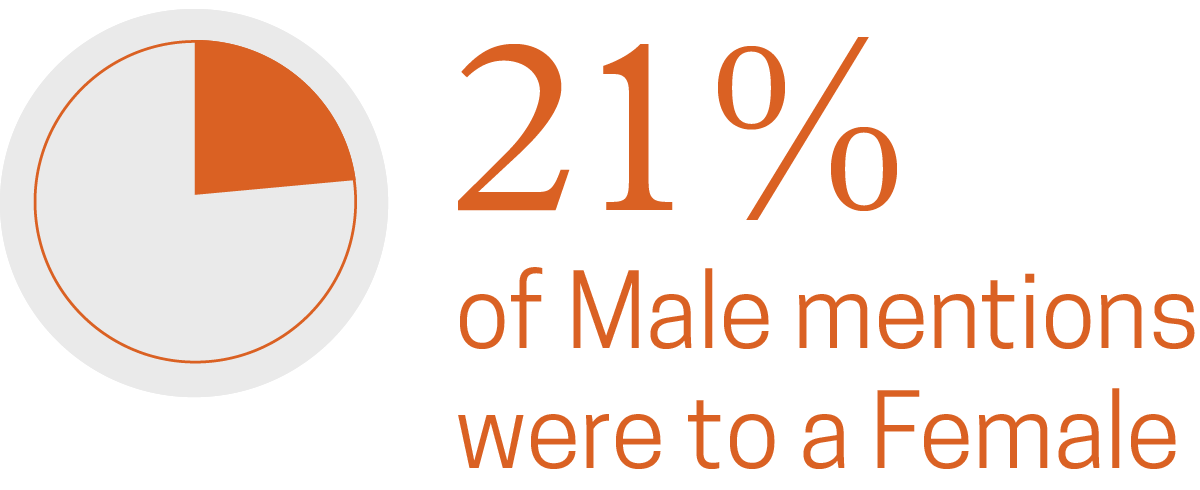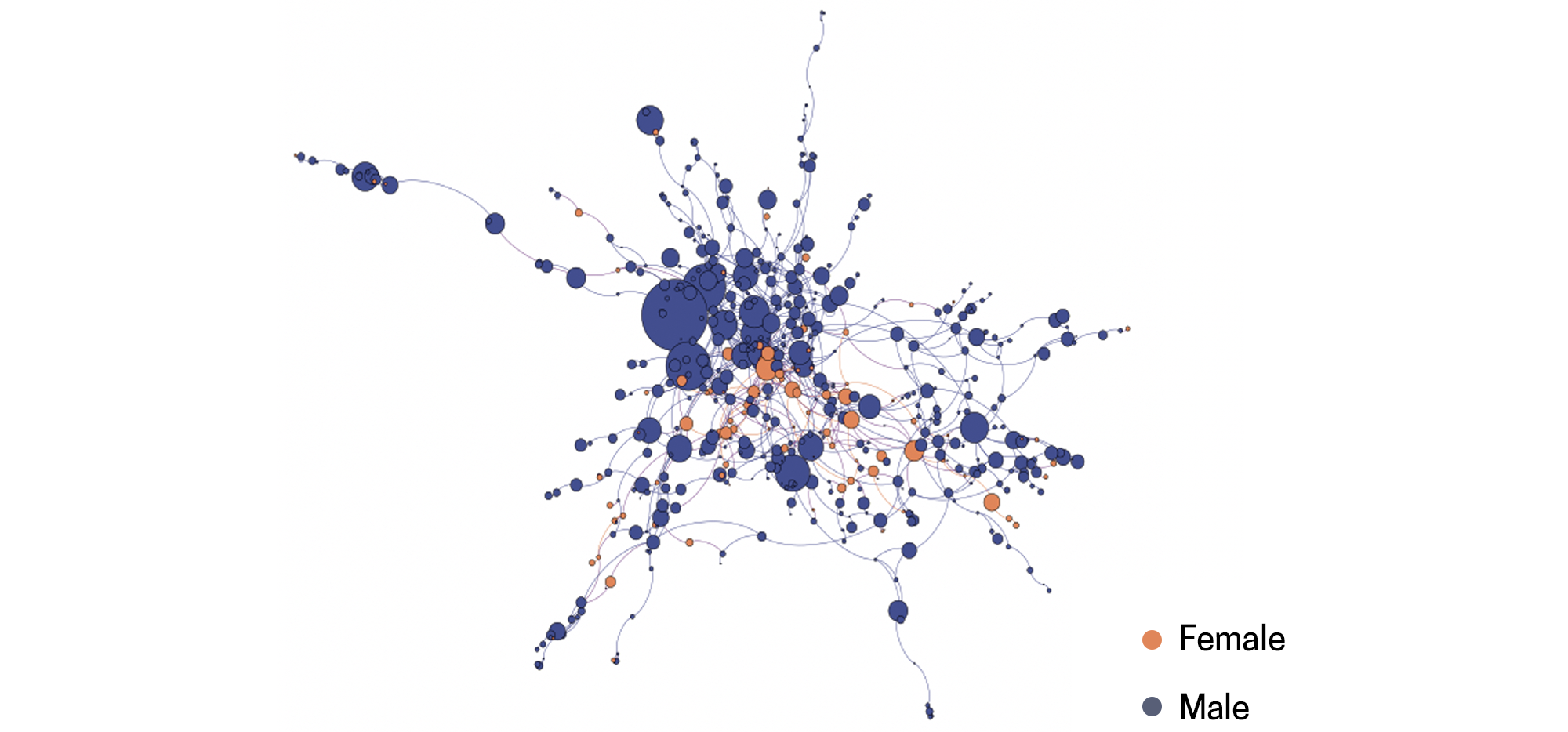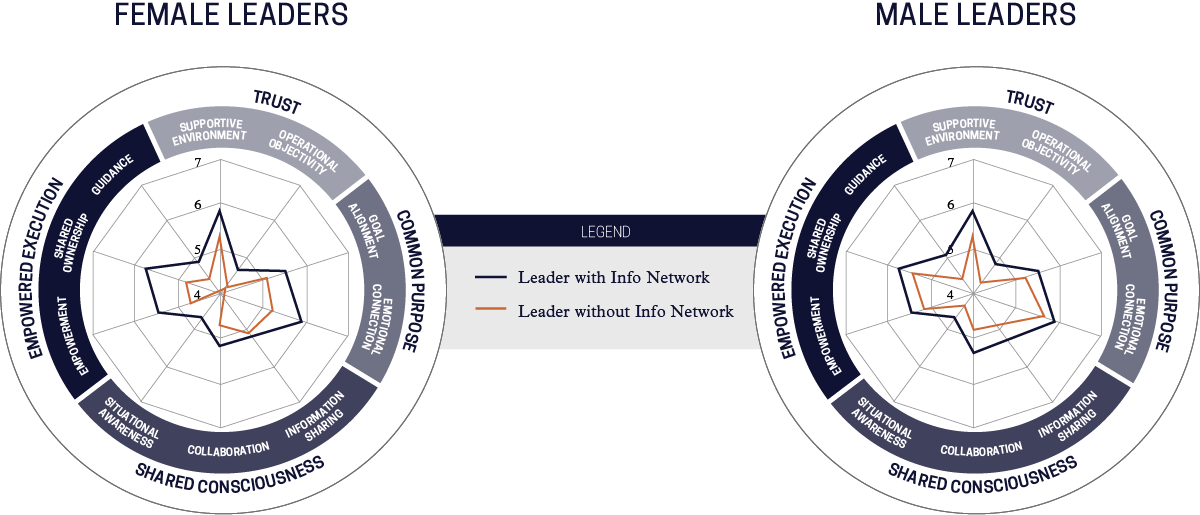As organizations have learned about the positive impacts of diversity on innovation1, organizational performance2, decision-making3, and turnover4, many have tried to address their own diversity and inclusion challenges by simply recruiting individuals of different genders, races, etc. While this is a necessary prerequisite, an organization must also change its processes, mindsets, and culture—or else risk that these employees may leave or become so institutionally isolated that they are rendered ineffective. Inclusion cannot be solved for by playing a numbers game, but instead requires a fundamental change in how organizations communicate and share information.
Even under the best of intentions, diversity, equity, and inclusion (DEI) programs often fail to reap the desired benefits. In attempts to identify why, we often hear that the focus has historically been on promoting diversity-first and worrying about inclusion second.
When diversity is an organization’s main focus, it can become a game of numbers, where individuals are aggregated into their racial or demographic groupings and organizations focus solely on increasing representation. Conversely, an inclusion-first perspective focuses on breaking down systemic processes that create barriers to success, demanding space to prioritize underrepresented voices and perspectives, and supporting uniqueness. While organizations must focus both on diversity and inclusion, an inclusion-first mindset is required to support a diverse workforce.
By fostering an inclusive environment for all members, your organization can better attract and retain a diverse workforce where employees feel integral to the organization because of their identity, rather than in spite of it. With this approach, inclusion and equity become a responsibility and priority for everyone at the firm rather than solely a human resources initiative. In inclusive environments, all employees - not just those in historically powerful identity groups—are fairly treated, valued for who they are, have a seat at the table, and are integrated and involved in the workgroup4, 5.
McChrystal Group partnered with a manufacturing organization that aimed to measure its overall organizational performance as well as the impact of its diversity, equity, and inclusion initiatives. To do this, we looked at how the organization’s information network impacted key indicators of inclusion.
Differences Between Male and Female Perceptions on Key Indicators of Inclusion
Our first step was to identify and understand meaningful differences between demographic groups. While at the aggregate level, men and women perceived the organizational environment fairly similarly, key differences emerged in how males and females in leadership positions rated their organization’s performance.
Specifically at the mid-leadership level, male and female supervisors diverged significantly in how they rated their environment on a key indicator of inclusion: access to information.
Female supervisors were less likely to agree that there was a process to share new information, that information was available to all employees, and that they had the necessary information to complete their job requirements. Because access to information and organizational knowledge are critical resources, having access to information signals power6 and insider status and can impact how positively employees view their environment.

Figure 1. Information sharing is highlighted as a key area where female supervisors scored significantly less positively than males supervisors.
Information moves through organizations via networks. In the most general sense, an organization’s communication and collaboration network should match its strategy and objectives—so the right information arrives to the right people at the correct time. Rather than basing communication and information sharing processes on informal or personal relationships (that can be exclusionary), teams should determine processes by the actions needed to execute on the strategy.
Beyond measuring indicators of inclusive environments, organizations must understand how their employees are actually connecting, communicating, and sharing information across group lines. Organizational network analysis can identify employees’ involvement in the work group, fault lines between groups, barriers to communication, instances where certain individuals or groups are marginalized, and provide a picture of overall immersion and the impact of targeted DEI efforts.
The Network Effects of Diversity
Commonly, we see people communicate most often with others who are similar to themselves, whether those groupings are dictated by gender, age, or function. Though birds of a feather may flock together, siloing supports neither effective information sharing nor collaboration, and can create fault lines between groups.
For example, our client had a workforce that was mostly male (82% male, 17% female). When looking at teammates who employees went to as a good source of information, 25% of all individuals mentioned were female and 75% of all who were mentioned were male. At first this may appear like a good news story, with less than 20% of the population accounting for one quarter of all mentions. However, when we examined who communicated with whom, we identified that females were much more likely to seek information from other females than males were (see Figure 2).


Figure 2. Females connect with other females at a higher rate than males connect with females.
Personal relationships help maintain supportive relational networks. The client built affinity groups for women, and saw that within their organization, women were, in fact, connecting and sharing information with each other. The challenge then was to identify whether those ties were providing the information necessary for these women to be successful at work.
While men tend to adapt their network to meet their present work demands, women tend to place a greater emphasis on building “stickiness” in their relationships, focusing on building relationships that grow stronger over time7. Pairing these network metrics with the previous data—female supervisors identified a lack of formal processes to share information—suggests females rely on their strong personal relationships to get the information they need, but there are still gaps.
When we dove into how leaders communicated, we could see that female leaders were clustered together, and male leaders were clustered together (see Figure 3). This signals there were very few male leaders leveraging their female counterparts as good sources of information, which could decrease the flow of important information between groups. Additionally, the female leaders’ circles were smaller, indicating they were leveraged less in general. While the client has made conscious efforts to build community within groups, these communication patterns revealed that males were still viewed as holding the majority of important information within the organization.

Figure 3. Female leaders are represented by orange circles, and male leaders are represented by blue circles. Larger circles represent individuals who are more often viewed as a great source of information.
The Reinforcing Nature of Networks
Having an information network may be more important to some groups than others. When we look at gender and leadership, we see that female leaders who reported having access to an information network had more positive perceptions of their environment than female leaders who did not cite having anyone as a good source of information.
We see the same pattern for male leaders. However, the drop in scores for females was significantly more drastic than it was for male leaders (see Figure 4). This includes key levers of inclusion such as fairness perceptions, having situational awareness of other teams, and clear understanding of decision-making. This suggests that access to information, and having trusted individuals to provide that information, may be more important to female leaders compared to male leaders. This client needed to take deliberate actions to support its female leaders in building meaningful connections across the organization.

Figure 4. Lacking an information network impacts female leaders more negatively than it does male leaders.
Conclusion
As the “diversity and inclusion” phrase suggests, the focus has historically been on diversity-first and inclusion second. While it is important to take actionable steps to increase diversity, by focusing solely on diversity metrics, we may unconsciously reinforce biases that entrench the deeply embedded societal norms and assumptions about group affiliation. Reducing diversity to a racial, ethnic, gender, or other group affiliation when looking for representation ignores the individual lived experiences and perspectives of individuals within minority groups. Hiring people of color, women, or individuals of other marginalized groups will increase diversity, but it will not create equitable access to resources, decision-making, or job mobility. This will not work in today’s organizations and can actually result in less favorable environments (i.e., increased conflict, increased turnover, lower cohesion)8, 9.
To foster perceptions of inclusion, organizations need to adopt a learning and integration outlook in which the perspectives, skills, and insights inherent to an individuals’ unique identity are viewed as useful and valued. The question that remains is: how does one foster this environment? The transition to an inclusive environment is not something that can be achieved via individual projects or initiatives10. Organizations need to fully engage in the operationalization of inclusion. Through normalizing inclusive processes and procedures, and exhibiting inclusive leadership behaviors, all members should benefit from a strong relational network, perceive they can be their authentic selves at work, and be valued for their unique and distinctive identities. An inclusive environment serves as the mechanism through which workplace diversity can serve as a key resource in adaptability.
CITATIONS
[1] Phillips, K. W. (2014). How diversity makes us smarter. Scientific American, 311 (4). Available online at https://www.scientificamerican.com/article/how-diversity-makes-us-smarter/
[2] Hunt, V., Prince, S., Dixon-Fyle, S., & Yee, L. (2018) Delivering through diversity. McKinsey & Company.
[3] Cloverpop. (2017). Hacking diversity with inclusive decision making [white paper].
[4] Nishii, L. H. (2013). The benefits of climate for inclusion for gender-diverse groups. Academy of Management Journal, 56(6), 1754-1774.
[5] Shore, L. M., Cleveland, J. N., & Sanchez, D. (2018). Inclusive workplaces: A review and model. Human Resource Management Review, 28, 176-189.
[6] Raven, B. H. (2008). The bases of power and the power/interaction model of interpersonal influence. Analyses of Social Issues and Public Policy, 8, (1) 1-22.
[7] Carboni, I., Cross, R., Page, A., & Parker, A. (2019). How successful women manage their networks [white paper]. Connected Commons.
[8] Jackson, S. E., & Joshi, A. (2011). Work team diversity. In S. Zedeck (Ed.), APA handbook of industrial and organizational psychology (pp. 651–686). Washington, DC: American Psychological Association.
[9] Mannix, E., & Neale, M. A. (2005). What differences make a difference? The promise and reality of diverse teams in organizations. Psychological Science in the Public Interest, 6(2), 31–55.
[10] Nishii, L. H., & Mayer, D. M. (2009). Do inclusive leaders help to reduce turnover in diverse groups? The moderating role of leader–member exchange in the diversity to turnover relationship. Journal of Applied Psychology, 94(6), 1412.



